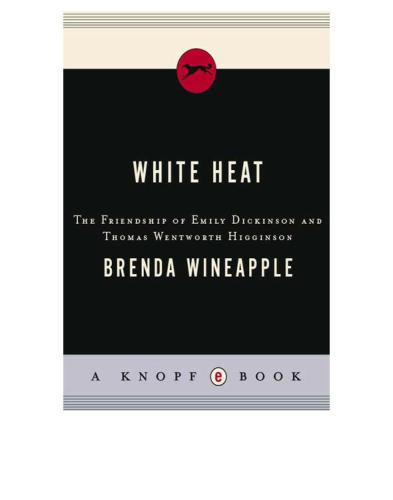
White Heat
The Friendship of Emily Dickinson and Thomas Wentworth Higginson
کتاب های مرتبط
- اطلاعات
- نقد و بررسی
- دیدگاه کاربران
نقد و بررسی

Starred review from June 23, 2008
In 1862, Emily Dickinson wrote to Thomas Wentworth Higginson, a noted man of letters and radical activist for abolition and women’s rights, asking if he would look at her poems. He did and recognized immediately their strange power. As Wineapple points out in this brilliant study, Dickinson’s letter marked the blossoming of a complicated lifelong friendship. Although the two met face-to-face only twice, Higginson found Dickinson’s explosive poetry seductive. Drawing on 25 years’ worth of Dickinson’s letters (Higginson’s are lost), Wineapple contests the traditional portrait of her as isolated from the world and liking it that way. In her poems and her letters, Wineapple shows, Dickinson was the consummate flirt, a “sorceress, a prestidigitator in words.” Wineapple resurrects the reputation of Higginson, long viewed as stodgy in his literary tastes (he reviled Whitman) yet who recognized Dickinson’s genius and saw her work as an example of the “democratic art” he fervently believed in. As Wineapple did previously with Hawthorne (Hawthorne: A Life
), she elegantly delves into a life and offers rich insights into a little-known relationship between two of the late–19th century’s most intriguing writers. 32 photos.

Starred review from July 1, 2008
With this unexpected queryAre you too deeply occupied to say if my Verse is alive?a reclusive young poet opened a quarter of a century of revealing correspondence with a prominent critic for the Atlantic Monthly. That criticThomas Wentworth Higginsonfigures in most recent accounts of Emily Dickinsons remarkable career as an obtuse meddler, blind to her living talent and inept in preparing her work for posthumous publication. In this revisionist assessment of the Dickinson-Higginson relationship, Wineapple delivers a far more favorable portrait of Higginson, a portrait that vindicates Dickinsons judgment in choosing him as her longtime confidant. Higginson may have comprehended Dickinsons revolutionary verse only falteringly, but he recognized and fostered the genius of its creator. Higginson embraced Dickinsons fearless prosody, Wineapple argues, because he had devoted his entire life to breaking down restrictive barriers. Fighting to free slaves and emancipate women, Higginson naturally responded sympathetically to Dickinsons daring assaults on traditional aesthetics. Because Higginsons letters have mysteriously vanished, Wineapple must infer much from Dickinsons missives. But as the conduit of more than 100 of Dickinsons wonderful poems, those missives radiate the luminous warmth of a friendship that forever enriched American literature. A nuanced and insightful study.(Reprinted with permission of Booklist, copyright 2008, American Library Association.)

























دیدگاه کاربران